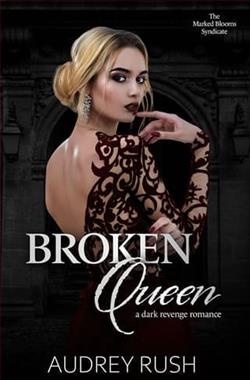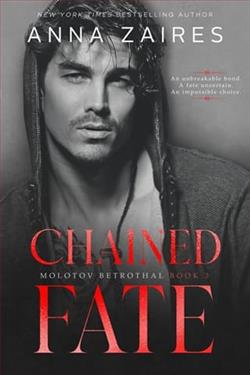Page 42 of The Secrets of Lord Grayson Child
Izzy glanced at Gray, and he obliged.
“Murder.”
Drake’s eyes widened. “This gets more and more interesting. Who was murdered?”
Between them, they told the tale of Quimby’s murder, including the involvement of the police, then explained their theory that the motive for the murder lay in the photographs Quimby took that day—that the killer had tried to destroy—and the subsequent discovery of the unmarred negatives and their efforts to identify what it was in the photographs that might have led to Quimby’s death.
By the time Izzy extracted the photographs, each wrapped in its individual information sheet, from her reticule, Drake and Louisa could barely wait for her to unfold the sheets and lay them on the low table Drake fetched and set between the sofas.
As soon as she smoothed out the sheets, Drake and Louisa leaned forward and pored over the prints.
After several seconds of Louisa muttering names beneath her breath, Drake said, “Let’s take these one at a time.” He lifted the sheet with the photograph of the riders in Hyde Park attached and spread it on top. Both he and Louisa studied it. “I agree with all the names you have,” Drake said.
“And that gentleman”—Louisa pointed to the single man they’d yet to name—“is Louis Kilpatrick.”
Izzy pulled a pencil from her reticule and wrote down the name.
“Right.” Drake set that sheet aside, revealing the next—the scene in Regent’s Park. “What about this one?”
Louisa brought her excellent memory to bear, and soon, they had the names of all the people in that photograph and the second Hyde Park scene and most of those in the view of the museum courtyard.
When it came to the print of the building near the new station, neither Louisa nor Drake could name anyone. “They’re ordinary people going about their business.” Drake scanned the print. “I seriously doubt there’s anything in this scene that might have triggered the photographer’s murder.” He set the sheet aside, revealing the view taken from London Bridge.
Louisa leaned close, peering at the two young ladies just visible along the bridge’s railing. Then she stabbed her finger at the stationary carriage, a section of the back of which had made it into the photograph. “That’s the Duchess of Lewes’s carriage. Such a ramshackle old thing, but she insists she finds it comfortable. And the two young ladies are the duchess’s granddaughters.”
Louisa rattled off names, and Izzy promptly added them to the sheet. “My mother thought as much, but wasn’t sure.”
Louisa nodded and re-examined the print. “I don’t think there’s anyone else we need to identify on that one.”
Izzy agreed, and Drake shifted the sheet to lie with the others beside the table.
Louisa studied the final print, the one of the scene outside the coffeehouse in Fleet Street. After a long moment, she shook her head. “I don’t know anyone in this one.” Her tone was almost forlorn.
Drake tapped his finger on the image of the largish, well-dressed gentleman, who was talking to a shorter, rotund, and rather nattily dressed man on the pavement before the coffeehouse. “His name’s Duvall. I’ve seen him around the corridors of Whitehall, but I can’t recall which department he’s with.”
Gray nodded. “Devlin said much the same, but couldn’t remember which department, either. At least we now have a name.”
On the sheet, next to Devlin’s “government” comment, Izzy wrote “Duvall, Whitehall?” and drew an arrow pointing to the man.
Drake lifted the other sheets and laid them on top of the one on the table, then all four sat back and regarded the stacked sheets.
“The critical question,” Louisa said, “is why would someone kill to stop any of these apparently innocuous pictures being published?”
Silence reigned, then Drake stated, “The next logical question is what is it that we don’t know?” After a moment, he went on, “I accept your thesis that Quimby was killed because of something one of these photographs reveals. That means the motive is staring us in the face, but as yet, we don’t know enough to recognize it.”
After a further moment of silent cogitation, Louisa shifted her gaze to Izzy’s face. “I readThe Crierevery week, so I know the owner is listed as I. Molyneaux—ah.” Her expression lightened. “Molyneaux is your mother’s maiden name, isn’t it?”
Izzy admitted it was. “I took that name to conceal my involvement with the paper.”
“Well, I certainly won’t tell anyone.” Louisa directed a sharp glance at her spouse. “And neither will Drake.”
He glanced at her and smiled, then looked at Izzy. “I won’t tell, but I admit I’m already thinking of what use I might have for a paper with a certain circulation and an understanding proprietor.”
Amused, Izzy shook her head at him, then Louisa, plainly curious, asked how Izzy actually ran the paper. “What, exactly, do you have to do?”
Izzy saw no reason to withhold such information. She described how each edition took shape, more or less going through her week’s work day by day.
Louisa and Drake listened avidly, occasionally posing questions, which Izzy duly answered.















